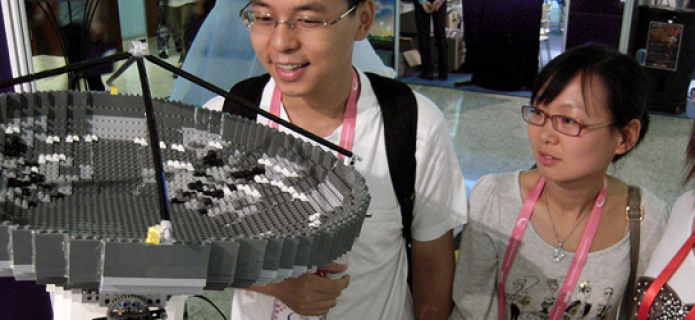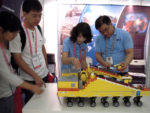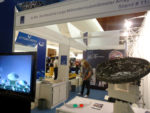"Playing" with ALMA in China
ALMA has one of the most popular stands at the International Astronomical Union's General Assembly, a meeting of the global astronomical community in Beijing. While this is not unexpected for the most advanced radio astronomy observatory in the world, what most attracts visitors are its models of an antenna and an antenna transporter made from those classic brick-shaped plastic pieces known as LEGO®. This creative way of demonstrating how the observatory functions was the idea of a group of students from the Universidad Federico Santa María (UTFSM).
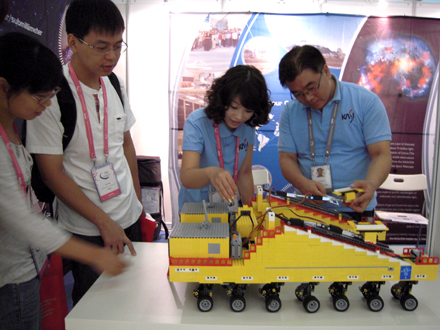 Using the colorful toys which can be used to make multiple shapes, the group of Chilean university students created robots capable of movement, directed by wireless control software that uses the same infrastructure as the software used to control the ALMA antenna array. This is the graphical and playful way in which the operations and interaction between the antennas and their transporters are illustrated, enabling the more than 2,000 astronomers at the Assembly to learn about ALMA. Visitors have shown the same enthusiasm and interest as the hundreds of engineers who participated in the SPIE Astronomical Telescopes and Instrumentation conference in Amsterdam, Holland, where ALMA's LEGO® models made their debut.
Using the colorful toys which can be used to make multiple shapes, the group of Chilean university students created robots capable of movement, directed by wireless control software that uses the same infrastructure as the software used to control the ALMA antenna array. This is the graphical and playful way in which the operations and interaction between the antennas and their transporters are illustrated, enabling the more than 2,000 astronomers at the Assembly to learn about ALMA. Visitors have shown the same enthusiasm and interest as the hundreds of engineers who participated in the SPIE Astronomical Telescopes and Instrumentation conference in Amsterdam, Holland, where ALMA's LEGO® models made their debut.
The student initiative, created in 2004, is part of a series of software research and development projects financed by ALMA-CONICYT funds, the results of which are currently being used in ALMA systems. “Thanks to the versatility of the toy and its attractiveness to both children and adults, we can demonstrate how the antennas and transporter work in a didactic way," said Víctor González, a project participant. Víctor worked with four other computer engineering students: Javiera Quiroz, Patricia Fredes, Andrea Ortega and Joao Fuentes. "It was a difficult technical challenge, which required putting about 10,000 pieces together, making ALMA Common Software interface tools compatible, and a total of one year to carry out this adventure,"said Fuentes. "As a team, we are really proud of what we have achieved."
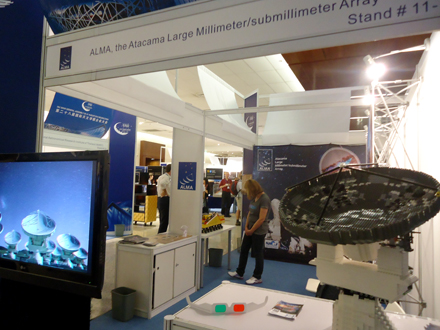 This project brings together the most ambitious radio astronomy project in the world with the most popular toy of all time.
This project brings together the most ambitious radio astronomy project in the world with the most popular toy of all time.
